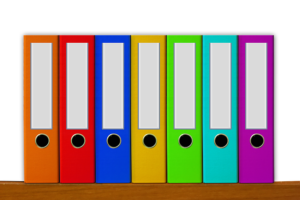-

Python Class
Python Class Table Of Contents: What Is A Class? How To Declare A Class? The __init__() Method. The ‘self’ Keyword. What Is Inside A Class? (1) What Is A Class? A class is an empty structure, where you put all of your variables and methods inside it. These variables will not have any value, at the time of class creation. It will be just a placeholder, where you will assign some values in the later stage. A class is a blueprint of your application, that you design before actually implementing it. (2) How To Declare A Class? A class can
-

Python OOPS Concepts
Python OOPs Concepts Table Of Contents: What Is Object Oriented Programming? Need Of Object Oriented Programming. Procedural Vs Object Oriented Programming. Advantages Of Object Oriented Programming. Oops, Concepts. (1) What Is Object Oriented Programming. While writing any program it is better to follow some predefined structure. When you start writing any program you should have a program structure in your mind. Randomly you can’t put your code anywhere in the program. To solve this issue, Python provides an Object Oriented programming approach. (2) Need Of Object Oriented Programming. OOPs provides a clear modular structure for the program. OOPs makes it
-

Python Regular Expressions
-

Python Exception Handling
Python Exception Handling Table Of Contents: What Is An Exception? Exception Handling Using Try And Except Block. Catching Specific Exception. Except Clause With Multiple Exceptions. Try With Else Block. Finally, Block In Exception Handling. Raise An Exception. Types Of Exceptions. (1) What Is An Exception? An exception is an unwanted event that occurred while your program was running. When your program depends upon external factors like user inputs, and outside resources like files, folders etc, that is out of your control. Sometimes users will enter random values, and sometimes file will not be present at the location where you are
-

Python File Handling
Python File Handling Table Of Contents: What Is A File? What Is File Handling? Check Whether The File Exist Or Not. How To Open Files In Python? Modes Of File Operation. How To Close Files In Python? How To Write Inside A File In Python? How To Read Files In Python? How To Delete A File In Python? How To Delete An Empty Folder In Python? How To Delete A Folder Containing Files In Python? (1) What Is A File? To store data or information permanently into your hard drive we generally use files. Files are the place where you
-

Python Modules
Python Modules Table Of Contents: What Is A Python Module? Creating A Python Module. Importing Python Module. The dir() Function. Import Using From Keyword. Import Module Using *. Locating Your Module. Renaming Your Module. (1) What Is A Python Module? If you want to make package of your code functionality and make it available to others , then you can use the concept of python module. A module can define functions, classes, and variables inside it. It can also include executable code in itself. Grouping related code into a module makes the code easier to understand and use. A Module
-

Python Built-In Functions
Python Built-In Functions (55) reversed() Definition: The reserved() function returns a reversed iterator object. Syntax: reversed(sequence) Parameter Values: sequence = Required. Any iterable object. Examples: alph = ["a", "b", "c", "d"] ralph = reversed(alph) for x in ralph: print(x) Output: d c b a (56) round() Definition: The round() function returns a floating point number that is a rounded version of the specified number, with the specified number of decimals. The default number of decimals is 0, meaning that the function will return the nearest integer. Syntax: round(number, digits) Parameter Values: number = Required. The number to be rounded digits
-

Python Built-In Functions
Python Built-In Functions Table Of Contents: What Is A Built-In Function? Different Built-In Functions. (1) What Is A Built-In Function? A built-in function is a function that is already available in a programming language, application, or another tool that can be accessed by end users. The end user can directly call the function to use it. But you must know how the function works. (2) Different Built-In Function? Python provides total of 69 built-in functions. Let’s discuss them one by one with examples. (1) abs( ) Definition: The abs( ) function returns the absolute value of the specified number. Syntax:
-

Python User Defined Functions
Python User Defined Function Table Of Contents: What Is A User Defined Function? Creating User Defined Functions. Calling User Defined Functions. Function With Return Type. Parameterized Functions. Default Arguments. Keyword Arguments. Variable Length Arguments. Pass By Reference Or Pass By Value. (1) What Is A User Defined Function? A function is a set of statements that take inputs, do some specific computation and produce output. The function which is written by the user is called User Defined Function. The function which comes by default from the programming language are called inbuilt functions. The sole purpose of creating function is to
-

Python Dictionary
Python Dictionary Table Of Contents: What Is A Dictionary? How To Create A Python Dictionary? Accessing Dictionary Elements. Looping Through Dictionary. Adding Elements To Dictionary. Updating Values In Dictionary. Removing Items From Dictionary. Copying A Dictionary. Deleting A Dictionary. (1) What Is A Dictionary? Dictionaries are used to store data in key:value pairs. Key is used to uniquely identify each value. Dictionary preserves the order of the elements stored. Dictionary do not allow duplicate elements to store. Dictionary is mutable in nature, that means we can add,remove or update the values of Dictionary without creating a new memory location. (2)
